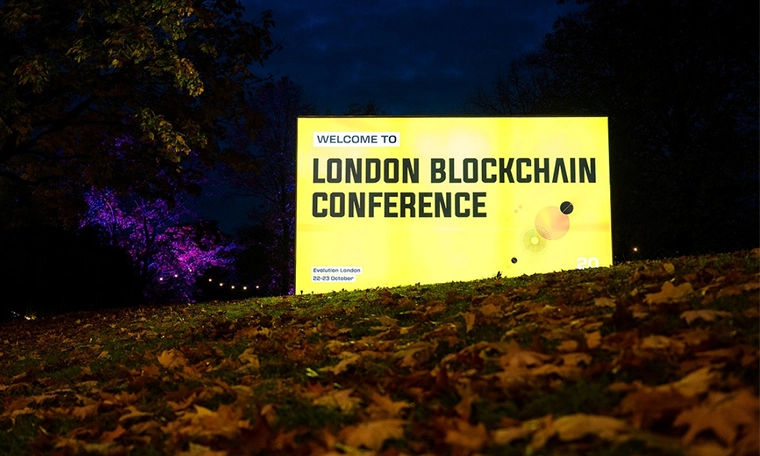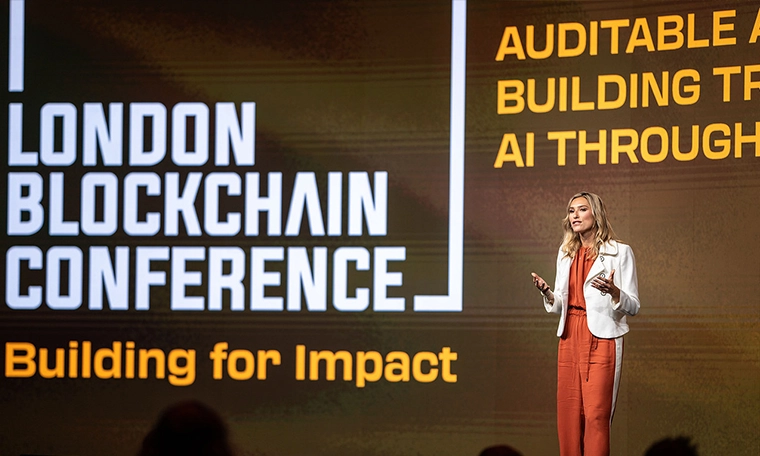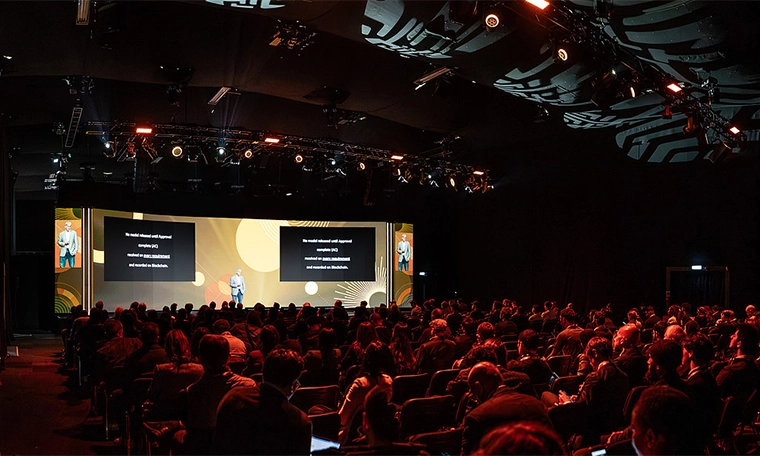As technology continues to advance, machine-to-machine (M2M) communication is playing a pivotal role in automating processes across industries. According to statistics, there are currently around 19.7 billion Internet of Things (IoT) devices in use globally, and this number is expected to exceed 30 billion by 2030. Many of these stellar advances have a close link to the recent growth of Web3 and blockchain technology, both vehicles for decentralised automation.
It is not just the quantity of connected devices that is growing, either; the quality of connectivity is also evolving with advancements in technologies such as blockchain. This innovation serves as a foundation for secure and verifiable interactions between machines, paving the way for a truly interconnected digital ecosystem.
At the London Blockchain Conference 2024, Richard Baker, Founder of Tokenovate, moderated a panel discussion on Building the Machine-to-Machine-Based Internet of Value. The panel featured notable experts such as Dr Owen Vaughan (Chief Science Officer at nChain), Adam Feiler (Head of Partnerships at Minima), and Patrick Gustafsson (Operations Leader at Volvo Cars).
The Difference Between Web3 and Blockchain
While the two are closely connected, Web3 and blockchain technology aren’t one and the same. Blockchain is, in essence, the technological basis for various decentralised applications which enable users to securely transfer assets and keep a record of them.
Meanwhile, Web3 envisions a decentralised internet more broadly as a space where users have greater agency over their own data, communications, and online platform governance. Blockchain forms the foundation of numerous Web3 systems, but the definition of Web3 can span other technologies as well, such as edge computing, decentralised storage, and identity systems.
Having clarity on the difference between Web3 and blockchain is the first step to understanding how both technologies work together to create a digital future where users hold the power.
The current state of M2M, Web3, and blockchain
Dr. Owen Vaughan offered insights into the evolution of the Internet and its implications for machine-to-machine communication. He outlined the progression from:
- Web1: A static, read-only environment.
- Web2: An interactive web dominated by tech giants such as Google and Facebook, offering convenience but often at the cost of data privacy and security.
- Web3: A decentralised vision where users regain control over their data and digital identities.
Vaughan emphasised that while IoT devices are pushing toward a Web3 future, many physical technologies, such as autonomous vehicles, are still rooted in Web2, where large corporations retain significant control.
However, the latest advances in Web3 and blockchain development are looking to change that by introducing new approaches for how these technologies can interact in more integrated ways, through solutions such as Decentralised Physical Infrastructure Networks (DePIN).
Decentralised Physical Infrastructure Networks (DePIN) and Web3
During the LBC panel discussion, Adam Feiler introduced the concept of Decentralised Physical Infrastructure Networks (DePIN), which merges decentralised digital services with real-world hardware. Through DePIN, individuals can own hardware assets (such as mobile hotspots) and earn micropayments for providing network services.
This reduces reliance on major tech firms and aligns with Web3’s vision of a decentralised, user-driven internet. It’s also an important step in the advancement of Web3 and blockchain technology, giving individuals the agency to take an active part in decentralised networks and benefit from them.
Real-World Examples of Web3 and Blockchain Development
Many industries are testing out the potential for decentralised automation by investing in Web3 and blockchain development:
Energy providers: Web3 and blockchain technology can transform energy grids through decentralised energy sharing networks which enable households to sell their excess solar energy directly to their peers with smart contracts.
Supply chain: Advancements in Web3 and blockchain development can also allow for better tracking of goods in real time by incorporating blockchain with IoT sensors to monitor their origin and condition.
Automotive: From tracking usage, authenticating owners, and even making automatic payments, introducing blockchain technology to cars and electric scooters can make transport much more seamless.
The consumer perspective: Connected cars and data ownership
The panel discussion also explored how M2M interactions impact consumers, particularly in the automotive industry. Patrick Gustafsson humorously likened modern cars to “large smartphones”, because of their ability to collect vast amounts of driver data through connected mobile devices and in-car sensors with the aim of optimising user experience.
Richard Baker extended this analogy, envisioning a future where drivers could own and monetise their car-generated data. Instead of traditional car ownership models, users might subscribe to various vehicle services based on their preferences. However, this raises important questions about data ownership – does the data belong to the driver or the manufacturer?
Gustafsson clarified that while users generally own their data, they must consent to its use through agreements with automakers. Looking ahead, multi-signature access (e.g. biometric authentication) could empower drivers to control vehicle-related transactions and services, further reinforcing Web3 and blockchain technology principles of digital identity and autonomy.
The role of blockchain in machine-to-machine communication
Blockchain is poised to revolutionise M2M interactions by providing a trustworthy, immutable record of transactions. Vaughan illustrated how blockchain can be crucial in ephemeral interactions, such as two autonomous vehicles briefly exchanging data while passing each other on the road.
Unlike traditional internet protocols like TCP/IP, blockchain operates across multiple layers of technology, ensuring transparency and security, and playing a key role in shaping how Web3 and blockchain systems interact.
Vaughan described blockchain as a “digital reference of permanence” that bridges the physical and digital realms, supporting numerous applications of the intersection between Web3 and blockchain technologies, including:
- Accountability in automation: Tokenisation can help pinpoint the responsible party in incident scenarios such as self-driving car accidents, thus promoting transparency through liability tracking.
- Identity and payments: Blockchain enables secure identity verification and transaction processing for connected devices, transforming insurance and financial models.
- AI and edge computing: As artificial intelligence shifts to edge devices, blockchain can enhance accountability by maintaining transparent decision-making records.
- Blockchain in vehicles: Integrating blockchain within vehicle hardware makes secure data sharing, seamless payments, and improved communication between machines possible.
The Future of Web3 and Blockchain Technology
The powerful pairing of Web3 and blockchain technology will increasingly empower sectors to unlock hidden value in their offering as adoption grows. We’re only beginning to see the potential that a decentralised, interconnected digital landscape might hold.
The road ahead won’t be without its challenges, of course – from regulation, to scalability, and the interoperability of blockchain. But overcoming these can be transformative, allowing technologies – and their users – to realise their full potential.
Be Where the Internet of Value Comes to Life
Web3 isn’t just a concept—it’s a new digital reality built on trust, transparency, and interoperability. As the foundations of the Internet of Value take shape, the question is no longer if blockchain will redefine the digital economy—but how fast.
The London Blockchain Conference 2025 is where that momentum becomes tangible.
Join us at Evolution London this 22–23 October to explore how blockchain, AI, and Web3 are delivering real-world results across finance, government, and enterprise. Connect with the minds leading the transformation. Witness the infrastructure powering this new era. Walk away with ideas—and allies—that move your mission forward.
Don’t just watch the future unfold. Build it.
Register now for the London Blockchain Conference 2025 and be part of the Internet of Value in action.



